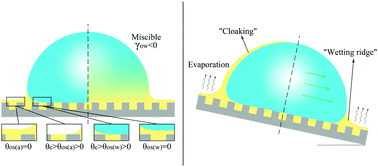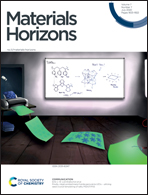What are the design principles, from the choice of lubricants and structures to the preparation method, for a stable slippery lubricant-infused porous surface?
Abstract
Despite decades of research, superhydrophobic surfaces still rely on a stable air layer that is plagued with problems, such as poor pressure stability, the inability to self-heal, and the failure to repel organic liquids or complex mixtures with low surface tension, and this seriously restricts their applicability. To address these limitations, new Nepenthes pitcher plant-inspired materials with a continuous liquid layer have been proposed, which are defined as slippery lubricant infused porous surfaces (SLIPS) that rely on a stable liquid layer. They show pressure stability, self-healing, and omniphobic properties with extremely low contact angle hysteresis for almost all liquids (such as blood, oil, and even butane, where γ ≈ 13 mN m−1). However, these surface functions will be diminished over time due to the depletion of the lubricant layer by various factors, including evaporation, solubility, shearing, the loss of the cloaking layer or the wetting ridge, etc. Therefore, it is critical to improve the stability of the lubricant layer for the preparation of stable and durable SLIPS. In this review, we mainly focus on how to enhance the stability of the lubricant layer and reduce the loss of lubricants to prolong the longevity of SLIPS. We start from the design principles, which should ensure that the substrate can be infiltrated and wetted by the lubricant rather than by external droplets. Thereafter, the effects of the physical properties of the lubricant (e.g. viscosity, vapor pressure, surface tension, etc.) and the type of structure (flat vs. rough, nanoscale vs. microscale vs. hierarchical, closed-cell vs. open-cell) on prolonging the lifetimes of SLIPS are discussed. Finally, a variety of physical and chemical methods have been explored, which aim to maintain a stable lubricant layer through capillary force, chemical interactions, swelling or by an embedded lubricant reservoir, as well as to maintain stimuli-responsive SLIPS that avoid unnecessary lubricant loss by employing microcapsules that lock up the lubricants or a phase changeable lubricant.



 Please wait while we load your content...
Please wait while we load your content...